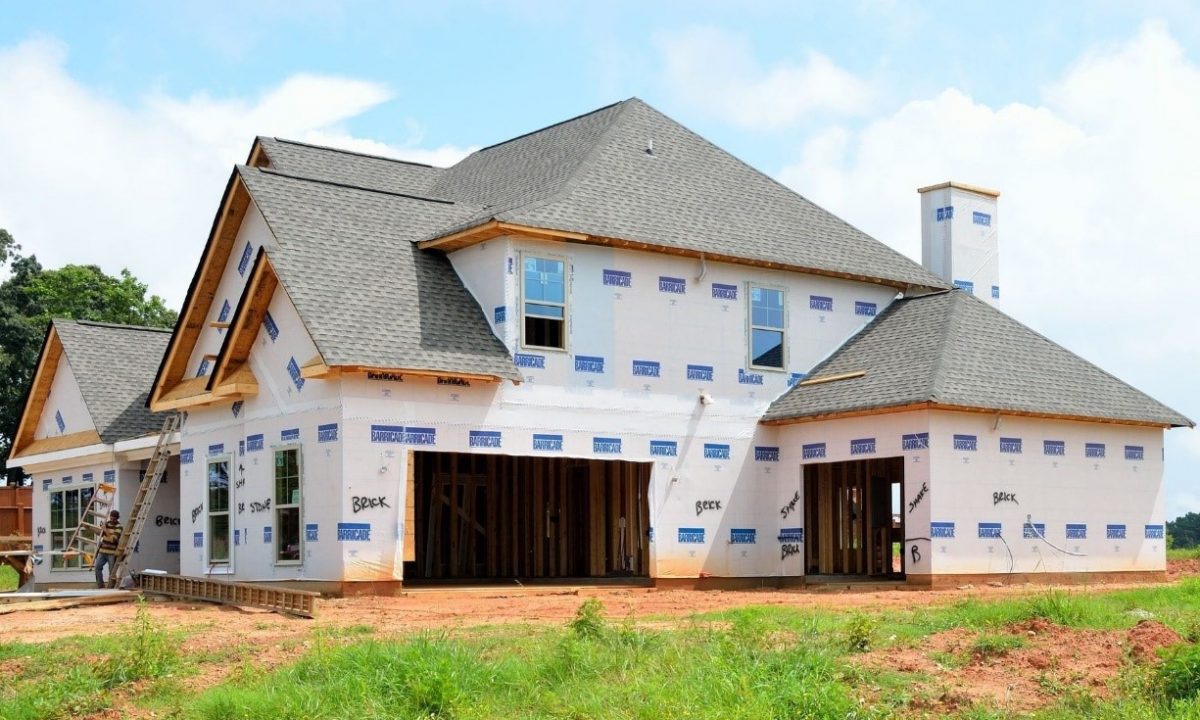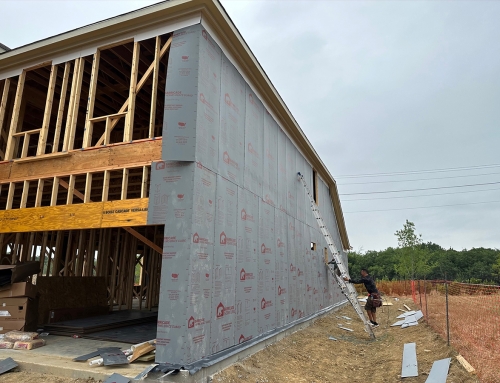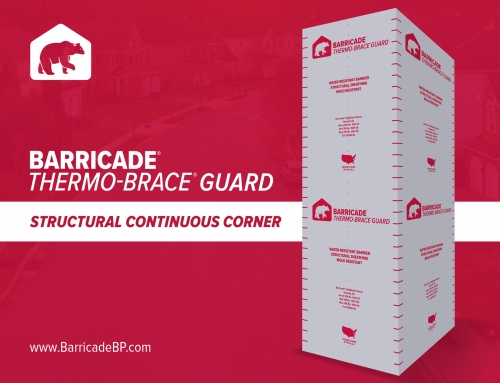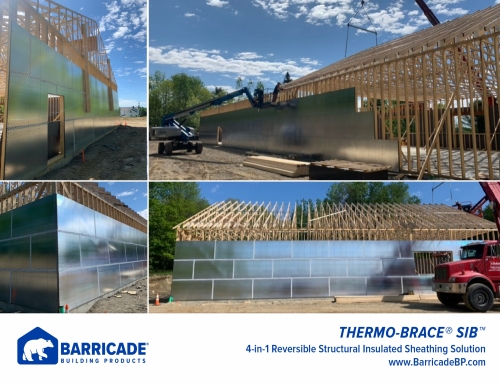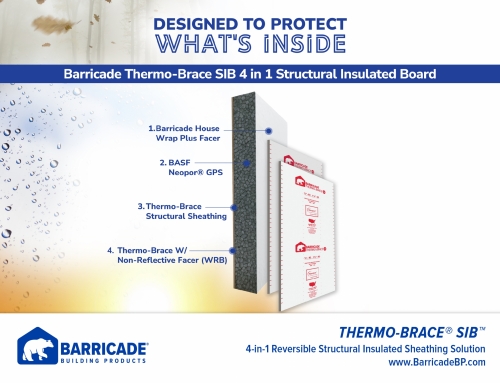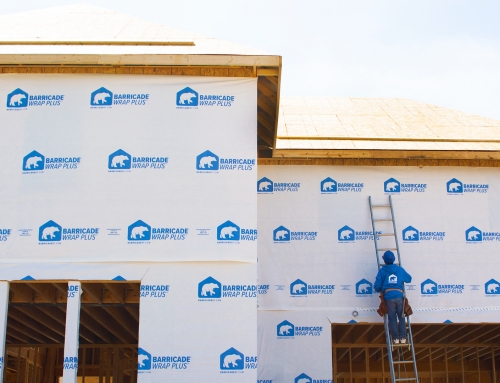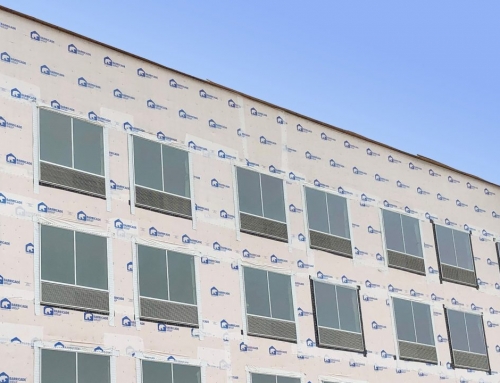Passive design minimizes the use of mechanical energy and creates a healthy, comfortable indoor environment. Essential to achieving passive design is a tightly-sealed envelope that is air- and moisture-resistant. It must also prevent water accumulation in the walls system.
Key elements of the passive design are continuous insulation and a vapor permeable air- and moisture-resistant barrier, like Barricade® house wrap. Other critical elements of a passive design include the local climate, the home’s orientation on the site, room and window placement, ventilation, thermal mass, and shading.
The success of passive design is dependent on all these elements working together to create a structure with a tight building envelope that utilizes renewable energy, like the sun and winds. Ultimately, passive design reduces mechanical energy use, saves money, and is good for the global environment.*1
A TIGHT BUILDING ENVELOPE IS CRUCIAL TO PASSIVE DESIGN
A tight building envelope, including the walls, roof, and the floor, is energy-efficient and reduces air- and moisture-infiltration. Essential components of a tight building envelope are continuous insulation and a vapor permeable, air- and moisture-barrier, like Barricade® house wrap. Continuous insulation, along with house wrap, stops air leakage (thermal bridging) and moisture accumulation in the wall system. Uncontrolled air infiltration lowers the effective R-value of the wall assembly.*2 Moisture resistance is critical to preventing rot and the growth of mold and mildew, which can damage a home and degrade the indoor environmental quality (IEQ) of a home.
A tight building envelope must also include energy efficient windows, skylights, and doors specific to the home’s climate zone. Crucial to passive design is a tight building envelope that stops air- and moisture- infiltration, along with moisture accumulation within the wall system of a home.
USING BARRICADE HOUSE WRAP IN A PASSIVE HOUSE
An excellent choice for passive design is the Barricade House Wrap. Barricade House Wrap is a high performing weather-resistant barrier that meets and exceeds the requirements of the IBC 1402.2 and IRC R703.1.1. It is air- and moisture-resistant, permeable, UV-resistant, and has high tear strength. It is also easy to install.
- The air-resistant levels of the Barricade Building Wraps are in accordance with IRC Section N1102.4.1 and IECC Section 402.4 and 502.4.
- Barricade Building Wraps pass all the house wrap’s water-resistant tests: ASTM D779 (boat test), CCMC 07102 (pond test), and AATCC Test Method 127.
- The five Barricade Building Wraps are vapor permeable. The ASTM E96 standard mandates house wrap with five perms or greater. The greater the number, the more permeable the material.
ALL FIVE OF BARRICADE BUILDING WRAPS HAVE GREATER THAN FIVE PERMS.
| House Wrap | Perm Rating (ASTM E-96A) |
|---|---|
| Barricade Wrap | 11 US Perms |
| Barricade Wrap Plus | 16 US Perms |
| R-Wrap® | 50 US Perms |
The success of a passive design is dependent on a tight building envelope that works in combination with several other factors.
- Passive design includes the use of thermal mass materials. Materials with thermal mass have inherent qualities for both cooling and heating.
- Passive design ensures proper site orientation of a home and window placements that take advantage of the sun’s energy.
- Shading with eaves and awnings can control the heat absorbed by a house.
A final important factor of passive design is ventilation, which removes moisture generated within a building and pollutants like radon, formaldehyde, and volatile organic compounds. Methods of ventilation include spot ventilation, such as exhaust fans in the bathroom and kitchen, natural ventilation, and an energy recovery ventilation system.
Critical to passive home design is continuous insulation and the use of a vapor permeable house wrap. Continuous insulation creates a tight building envelope that is energy-efficient. House wrap prevents air- and moisture-infiltration along with the accumulation of moisture within the wall system. House wrap ensures a comfortable, healthy indoor environment.
Other factors home builders and architects should consider with passive design are the local climate, the home’s orientation on the site, room and window placement, ventilation, thermal mass, and shading. Importantly, passive design reduces, if not eliminates, a home’s dependency on mechanical energy and creates a high indoor environmental quality for the occupants. Visit Barricade® House Wrap for more information on how house wrap plays a role in passive home design.
*1 The burning of fossil fuels has caused an increase in greenhouse gases, which is responsible for global warming. Global warming has caused sea levels to rise due to increasing rates of glacial melting, more acidic oceans, due to climbing carbon dioxide levels, and more frequent and severe weather events.
*2 The effective R-value of a building’s wall assembly is a measure of its resistance to airflow. The effective R-value includes all the materials used in its construction: the drywall, studs, fiberglass batts, plywood or OSB sheathing, water control plane, and siding. The lower the R-value, the higher the conductivities of the wall assembly and the more susceptible a wall assembly is to air infiltration.

